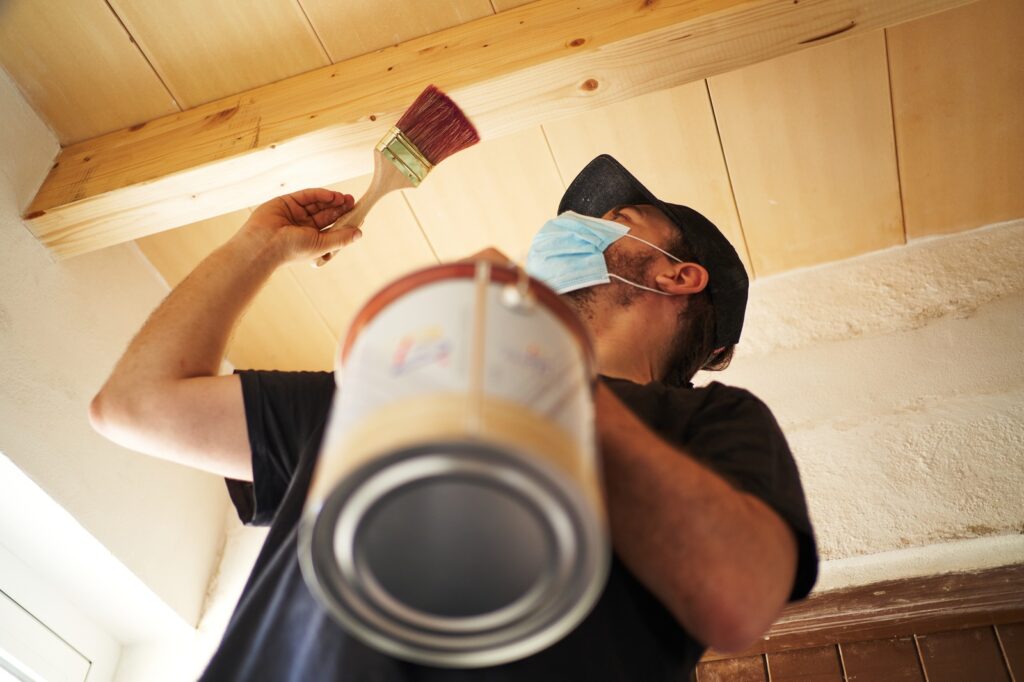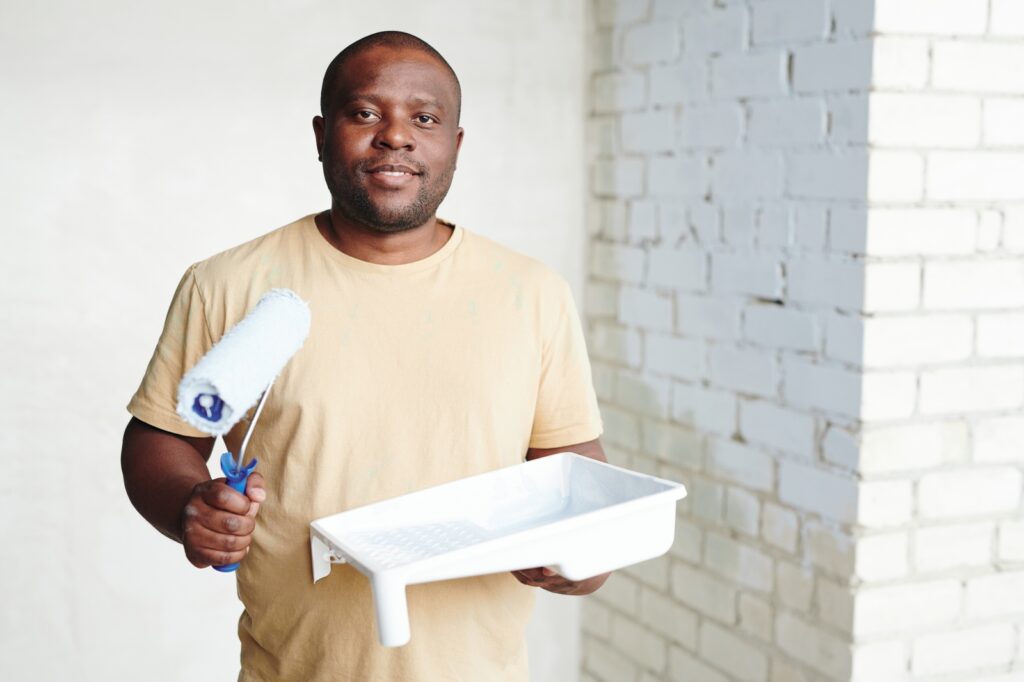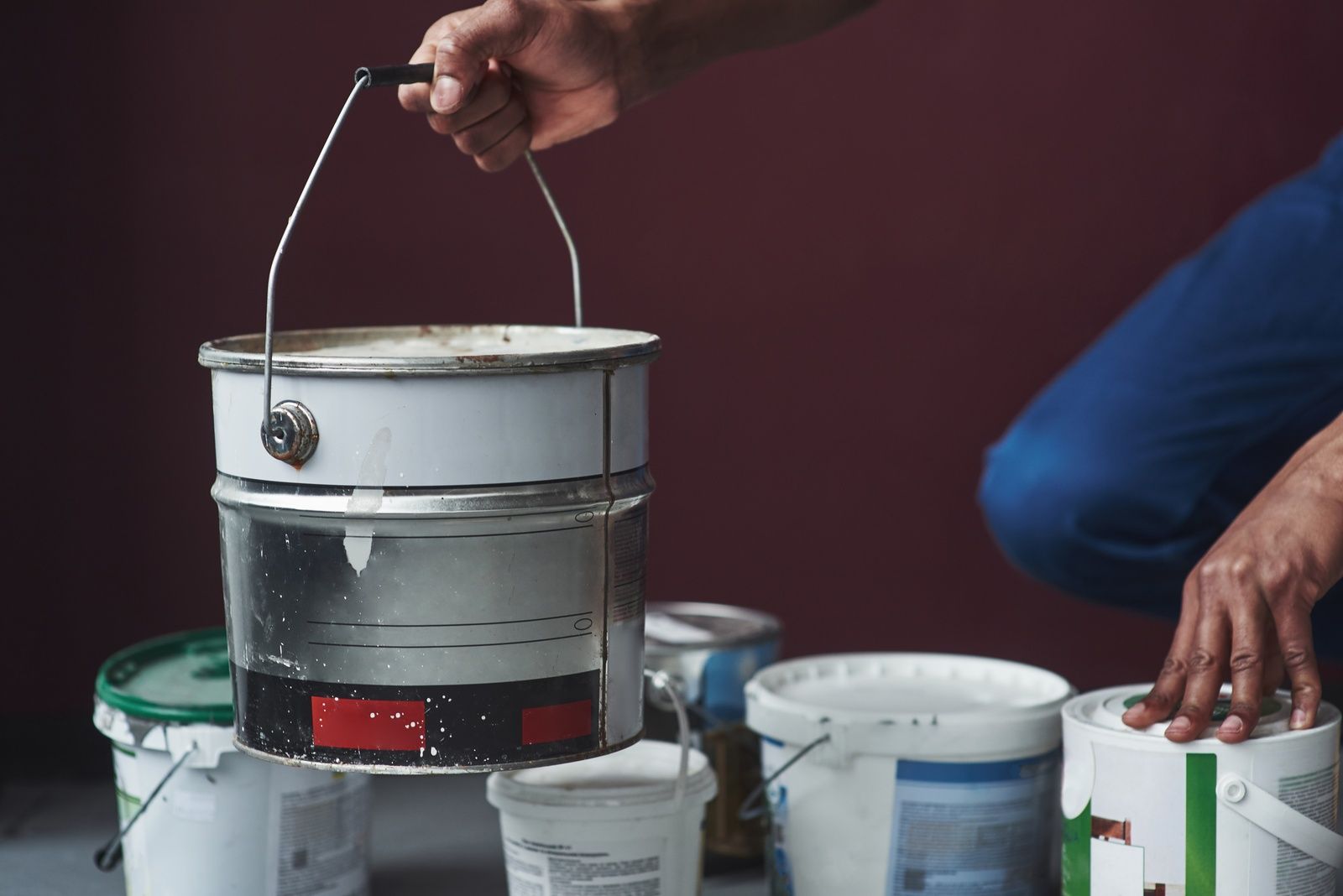
Can You Mix Flat And Satin Paint?
Thinking about giving your walls a fresh look but unsure if you can mix flat and satin paint?
You’re not alone! Many DIY enthusiasts and homeowners wonder if combining these two finishes is a good idea.
In this guide, I’ll explain if mixing these two types of paint is possible, what you can expect. And I’ll also show you how to mix flat and satin paint.
Can You Mix Flat And Satin Paint Together?
Yes, you can mix flat and satin paint together to create a custom finish.
When these two paints are combined, you’ll get a unique sheen that falls somewhere between flat and satin, depending on how much of each you use.
The resulting finish offers improved durability compared to flat paint alone, since the satin component adds better washability and wear resistance. You’ll also get a subtle, sophisticated look that many people find more appealing.
The Biggest Challenges
Mixing flat and satin paint, and using it is not as easy as you might think.
The biggest hurdle you might face is with future touch-ups – getting the exact same sheen level when you mix paint again can be tricky, and you might notice differences between the touched-up areas and the original paint job.
Also Read: How Should I Clean My Painted Walls?
Color matching can also be challenging, particularly if you’re working with different brands or colors, so you need to check if the paints are compatible.
How To Mix Flat And Satin Paint

Now that you know mixing flat and satin paint is possible, let’s dive into the step-by-step process to ensure you get the best results for your painting project.
Follow these steps carefully to get that perfect custom finish you’re looking for:
#1 Choose Compatible Paints
Start by selecting paints that will work well together – this is absolutely crucial for success.
Look for paints from the same manufacturer and product line whenever possible.
They should also be from the same base family – either both latex-based or both oil-based paints. Mixing different bases is a common mistake that can lead to serious problems like poor adhesion, uneven drying, and a compromised finish.
Take time to read the labels carefully and don’t hesitate to ask for advice from the paint store.
Also consider factors like the age of the paints and whether they’ve been properly stored, as these can affect how well they blend together.
#2 Choose A Mixing Ratio
This step requires some thought about exactly what kind of finish you want to achieve.
The standard approach is using two parts satin paint to one part flat paint, which creates a balanced finish with moderate sheen.
However, you can adjust this ratio based on your specific needs – if you want something closer to flat, use more flat paint; if you prefer more shine, increase the satin paint portion.
Also Read: Identifying Paint Finish on Existing Walls
Keep in mind that even subtle changes in the ratio can significantly affect the final appearance.
It’s worth taking notes about the exact measurements you use, especially if you might need to mix more paint later for touch-ups or additional coats.
#3 Mix Thoroughly
The mixing process deserves more attention than most people give it.
Start with a completely clean, dry container that’s large enough to hold all your paint plus extra space for thorough mixing.
If you’re using a drill attachment mixer (recommended for larger quantities), begin mixing at a slow speed to avoid splashing, then gradually increase the speed.
Mix for at least 2-3 minutes, even if the paint looks blended sooner.
Pay special attention to the bottom and sides of the container where paint can settle.
If mixing by hand, use a paint stirring stick and mix in both clockwise and counterclockwise directions, making sure to scrape the bottom and sides frequently.
#4 Test The Mixture
Testing is a critical step that shouldn’t be rushed.
Choose a test area that’s in a less noticeable spot but still receives similar lighting to your main painting area.
Then apply the mixed paint in a generous patch – at least 12 inches square – and let it dry completely, which typically takes 24 hours.
Check the dried paint at different times of day to see how various lighting conditions affect the sheen. If possible, test your mixture on each wall you plan to paint, as different light exposures can make the same paint mixture look slightly different.
Make sure you’re completely satisfied with both the color and sheen level before proceeding with the full project.
Also Read: Remove Grease Stains From Kitchen Walls
#5 Apply Evenly
Application technique becomes even more important when working with mixed paint.
Use high-quality rollers or brushes appropriate for your wall texture, and maintain a consistent application pressure throughout the project.
Work in sections about 3-4 feet square, always keeping a wet edge to prevent lap marks.
Pay extra attention to corners and edges. If you need to take a break, try to stop at natural breaking points like corners or trim lines.
#6 Consider Touch-Ups
Planning for future touch-ups is crucial when working with mixed paint.
Mix enough paint for your entire project plus an extra gallon for future touch-ups.
Store the extra paint in an airtight container, and label it meticulously with the exact mixing ratio, brands and colors used, date mixed, and which room it was used in.
You might even want to consider creating a small test board with the mixed paint that you can keep for color matching later.
Store your touch-up paint in a temperature-controlled environment away from direct sunlight.
It’s also helpful to write down any specific application techniques you used, as matching both the color and application method will give you the best results for future touch-ups.
Bottom Line

Mixing flat and satin paint can be done, but you need to pay attention to the details and prepare properly.
Whether your project turns out great depends mostly on picking the right paints, getting your mixing ratios right, and applying the paint correctly.
While it takes more planning than just using paint straight from the can, creating your own custom finish can be worth the extra effort if you’re looking for something specific.
That said, if you’re worried about keeping things consistent or making touch-ups easier down the road, you might want to stick with ready-mixed paint in whatever shine level you prefer.
FAQs
What Can I Add To Flat Paint To Make It Glossy?
You can add a polyurethane or gloss medium to flat paint to increase its sheen and give it a glossy finish.
Can You Mix Flat And Satin Paint For Walls?
Yes, you can mix flat and satin paint for walls, but the result will be a finish somewhere between the two, with a slight sheen but not as glossy as satin alone.
Comments are closed.


